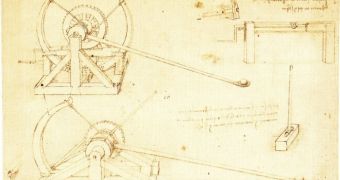Leonardo da Vinci was undoubtedly the most brilliant mind of the Renaissance period, a well-skilled inventor and engineer, as well as a master in most of the arts, such as painting, sculpting, music, architecture, mathematics, botany and anatomy. A great part of his most famous works, sketches, designs and handwritings are comprised in a collection called Codex Atlanticus, which dates from 1519. Since the approximately 1,120-page book is almost 500 years old, there have been worries related to its condition and preservation.
Nevertheless, officials from the Biblioteca Ambrosiana in Milan, Italy, where the Codex is kept and exhibited at times, stated that there was no reason to worry about its preservation, since mold had not breached into the pages of the book, which are very well preserved. The book is kept in an air-conditioned room, at a proper constant temperature and humidity. The tests performed by the central institute for the conservation and restoration of book heritage indicated that the explanations and drawings of flying machineries or weapons, and other topics found in the manuscript were safe from any “biological onslaught.”
According to the study, the dark stains on the book were not mold but actually remains of disinfecting mercury salts, which shield it from the “biological and microbiological onslaught” that some scholars feared might affect it. Furthermore, the public statement made during yesterday's conference at the Biblioteca Ambrosiana pointed out that the respective stains were not even present on the book itself, but in fact covered the protective paper covers attached to the pages between 1970 and 1973.
Leonardo da Vinci's Codex Atlanticus was last displayed in public view 10 years ago, in 1998. Future exhibitions will include Biblioteca Ambrosiana's 400th anniversary celebration on December 8 next year, as well as the Milan Expo, which will take place in 2015. As an alternative, there are several websites that try to reproduce the drawings and the designs, as well as to display some photos of the original pages. In the meantime, others offer a comprehensive interactive approach to the work of the Renaissance genius, or even sell replicas of his most famous achievements.

 14 DAY TRIAL //
14 DAY TRIAL //